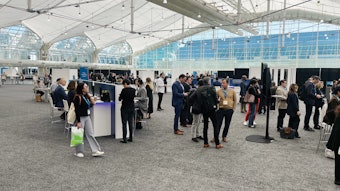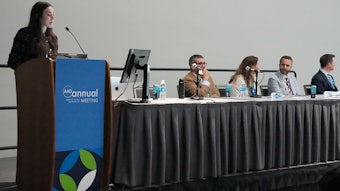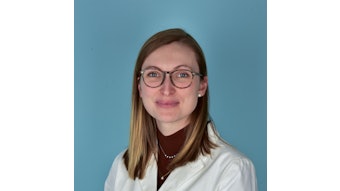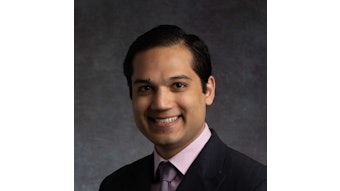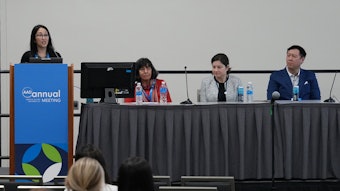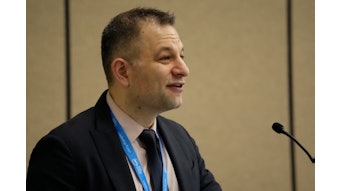Healing for all skin types
New technologies and strategies provide acne relief for diverse patient population.

Acne vulgaris is the most diagnosed skin condition in the United States. There were nearly five million cases of acne in 2019, according to the Global Burden of Disease. Of these, 70% of diagnoses occurred in patients 15 to 49 years old. These numbers are likely underrepresented, as they can only account for people who visited a doctor for treatment.
In addition to its prevalence, acne can have a significant impact on patients’ lives, said Valerie Callender, MD, FAAD, session director of the March 11 session, U100 – Lasers and Energy Devices in the Treatment of Acne. Dr. Callender is the founder and medical director of Callender Dermatology & Cosmetic Center in Glenn Dale, Maryland. Acne often affects both physical and behavioral health, she said, and it can become a factor in anxiety, depression, social isolation, or more.
“I, like all dermatologists, know that these conditions affect quality of life, self-esteem, and confidence, so it’s important that I address these concerns for my patients to make them feel good about themselves,” Dr. Callender said.
Evolution of treatment
According to Dr. Callender, many standard treatments for acne, such as oral antibiotics or topical preparations, retain restrictions and undesirable side effects. Examples of this are isotretinoin, which carries the risk of teratogenicity, and antibiotics, which can cause gastrointestinal symptoms or yeast infections in women.
Recent technologic advancements allow for new treatment options for acne, she said. Innovative lasers and energy devices can be more effective by targeting specific chromophores, such as sebaceous glands within the skin, which minimizes tissue damage and produces fewer adverse reactions. Lasers can also be preferred therapies for patients who are non-compliant with medicine and those whose previous treatments have failed.
“I have patients that request lasers for their acne, and others who have tried traditional therapies and have been disappointed with their results,” she said.
Previous lasers and energy devices for acne have been associated with dyschromia, such as photodynamic therapy, pulsed dye laser, 1320nm Nd:YAG laser, and 1450nm diode laser. However, newer lasers, such as the 650 microsecond 1064nm Nd:YAG and 1726nm lasers, are color blind and have a low risk of pigmentary alterations.
In addition to the use of laser surgery, Dr. Callender said patients may still benefit from standard acne medications, such as oral or topical antibiotics, topical retinoids, and benzoyl peroxide as well as oral spironolactone or topical clascoterone for women. She also recommends azelaic acid and hydroquinone to help address acne-induced hyperpigmentation in patients with darker skin.
Due diligence
As a dermatologist, Dr. Callender said it is equally important to address impending adverse events and initiate early intervention when possible.
For instance, about 90% of patients in her practice who suffer from acne also have, or develop, post-inflammatory hyperpigmentation (PIH), a form of dyschromia. According to the National Hospital Ambulatory Medical Care Survey, acne is the leading dermatologic disorder among skin of color (SOC) patients and dyschromia is among the top 10 diagnoses in Black (No. 5) and Latino (No. 10) individuals.
Since inflammation increases the sensitivity of a person’s melanocytes, people who have darker skin are more susceptible to PIH, she said. A patient may experience PIH as a direct result of their skin disorder or as a sequela of a dermatologic procedure. Skin irritation, inflammation, and cutaneous injury can also trigger PIH.
“Many patients with acne are more concerned with correcting the dark spots on their skin,” she said. “It’s important to not only address what we see — acne — but also the hyperpigmentation at the same time, because it’s often the primary focus for the patient.”
Dr. Callender provided recommendations to prevent or reduce the effects of PIH with lasers, including:
- Performing test spots
- Pre-treating the area(s) with skin lightening agents
- Applying epidermal cooling methods, such as thermal contact or spray
- Providing photoprotection
- Prescribing medium- to high-potency topical corticosteroid for three to five days following the procedure
There is also research on the use of tranexamic acid (off-label) to treat and prevent PIH in patients.
“I treat patients of all skin types for all dermatologic conditions, no matter how challenging,” she said. “My goal is to improve patients’ lives, and that’s what keeps me going and coming to the office every day.”

